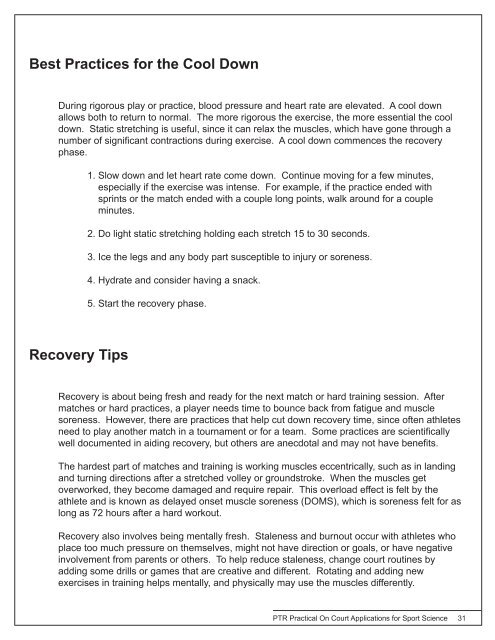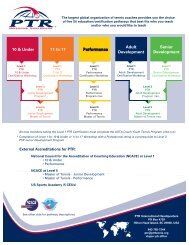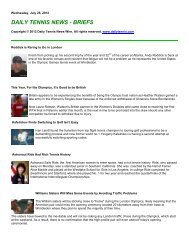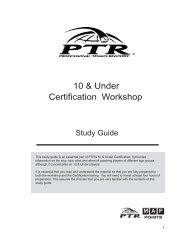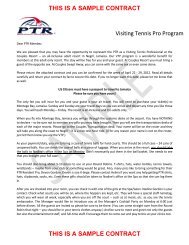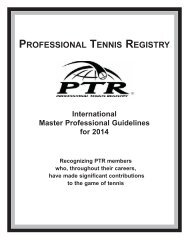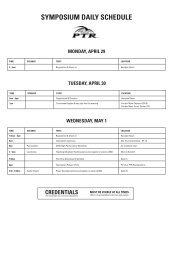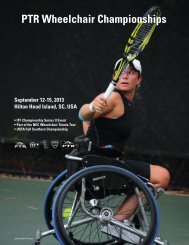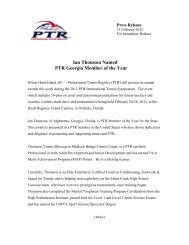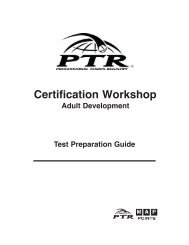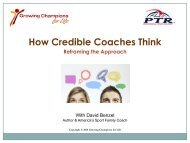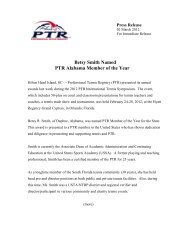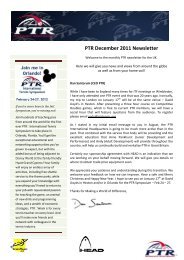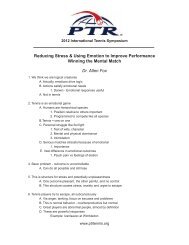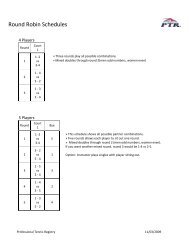SPORT SCIENCE - Professional Tennis Registry
SPORT SCIENCE - Professional Tennis Registry
SPORT SCIENCE - Professional Tennis Registry
Create successful ePaper yourself
Turn your PDF publications into a flip-book with our unique Google optimized e-Paper software.
Best Practices for the Cool DownDuring rigorous play or practice, blood pressure and heart rate are elevated. A cool downallows both to return to normal. The more rigorous the exercise, the more essential the cooldown. Static stretching is useful, since it can relax the muscles, which have gone through anumber of significant contractions during exercise. A cool down commences the recoveryphase.1. Slow down and let heart rate come down. Continue moving for a few minutes,especially if the exercise was intense. For example, if the practice ended withsprints or the match ended with a couple long points, walk around for a coupleminutes.2. Do light static stretching holding each stretch 15 to 30 seconds.3. Ice the legs and any body part susceptible to injury or soreness.4. Hydrate and consider having a snack.5. Start the recovery phase.Recovery TipsRecovery is about being fresh and ready for the next match or hard training session. Aftermatches or hard practices, a player needs time to bounce back from fatigue and musclesoreness. However, there are practices that help cut down recovery time, since often athletesneed to play another match in a tournament or for a team. Some practices are scientificallywell documented in aiding recovery, but others are anecdotal and may not have benefits.The hardest part of matches and training is working muscles eccentrically, such as in landingand turning directions after a stretched volley or groundstroke. When the muscles getoverworked, they become damaged and require repair. This overload effect is felt by theathlete and is known as delayed onset muscle soreness (DOMS), which is soreness felt for aslong as 72 hours after a hard workout.Recovery also involves being mentally fresh. Staleness and burnout occur with athletes whoplace too much pressure on themselves, might not have direction or goals, or have negativeinvolvement from parents or others. To help reduce staleness, change court routines byadding some drills or games that are creative and different. Rotating and adding newexercises in training helps mentally, and physically may use the muscles differently.PTR Practical On Court Applications for Sport Science 31


